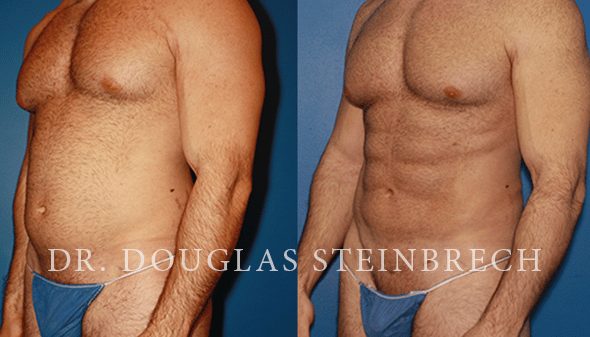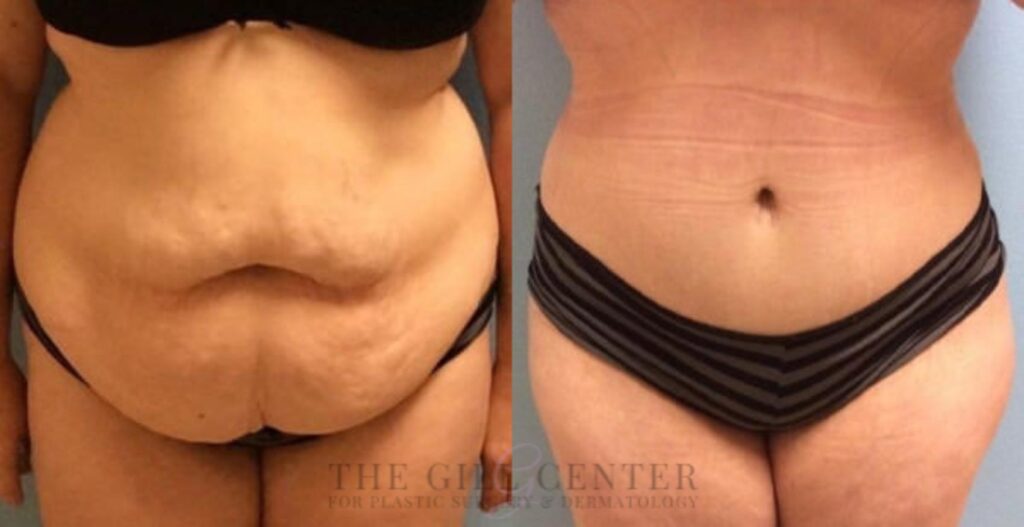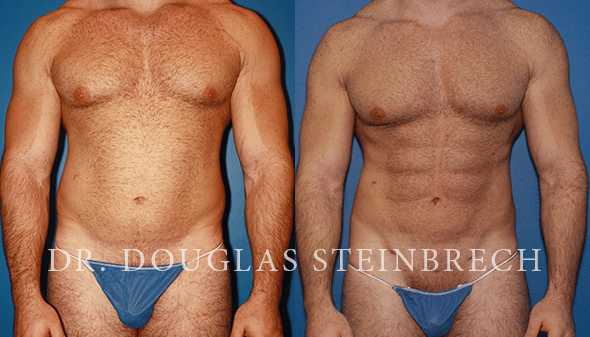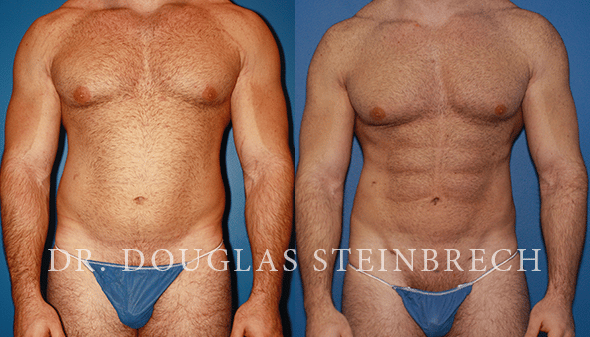Are you dissatisfied with certain aspects of your body and dreaming of a transformation? Look no further than plastic surgery to achieve the body of your dreams. With goals plastic surgery, you can enhance your features and boost your confidence. From breast augmentations to tummy tucks, there are a variety of procedures available to help you achieve your desired look. Say goodbye to those insecurities and hello to a new, confident you. Explore the world of plastic surgery and discover the endless possibilities for transforming your body.

This image is property of highdefinitionbodycontouring.com.
Understanding Plastic Surgery
What is plastic surgery?
Plastic surgery is a branch of medical science that focuses on enhancing and transforming the appearance of individuals through surgical procedures. It involves the reconstruction or alteration of various parts of the body to improve aesthetics, functionality, or both. Plastic surgery can be performed on both the face and the body, with the aim of achieving desired results and boosting self-confidence.
Different types of plastic surgery
Plastic surgery encompasses a wide range of procedures, each targeting different areas of the body or addressing specific concerns. Some of the most common types of plastic surgery include:
Breast augmentation: This procedure involves enhancing the size and shape of the breasts through the use of implants or fat transfer.
Liposuction: Liposuction is a popular procedure that removes excess fat deposits from various parts of the body to contour and reshape the silhouette.
Tummy tuck: Also known as abdominoplasty, a tummy tuck removes excess skin and fat from the abdomen, resulting in a flatter and more toned appearance.
Brazilian butt lift: This procedure aims to enhance the shape and volume of the buttocks through fat transfer, providing a more youthful and lifted appearance.
Body lift: Body lift surgery targets multiple areas of the body, such as the abdomen, thighs, and buttocks, to address sagging skin and improve overall body contour.
Mommy makeover: A mommy makeover is a combination of procedures that addresses the physical changes that occur after pregnancy, typically including breast augmentation or lift, liposuction, and tummy tuck.
Thigh lift: Thigh lift surgery removes excess skin and fat from the thighs, resulting in a more toned and contoured appearance.
Arm lift: Also known as brachioplasty, an arm lift removes excess skin and fat from the upper arms, resulting in firmer and more defined arms.
Body contouring: Body contouring procedures encompass various surgical techniques to reshape and sculpt the body, usually after significant weight loss.
Body sculpting: Body sculpting refers to non-surgical procedures that use devices or injectables to reshape and contour the body, such as CoolSculpting or Kybella.
Benefits of plastic surgery
Plastic surgery offers a multitude of benefits beyond just physical transformation. Enhancing one’s appearance through plastic surgery can positively impact self-esteem, body confidence, and overall well-being. It allows individuals to regain their confidence, address physical insecurities, and feel more comfortable in their own skin.
Moreover, plastic surgery can also have functional benefits. For example, breast reduction surgery not only enhances the appearance of the breasts but also alleviates back and shoulder pain caused by excessive breast weight. Rhinoplasty, or nose reshaping surgery, can improve both the aesthetics of the nose and breathing difficulties.
Additionally, plastic surgery can help individuals overcome body image issues resulting from genetic factors, accidents, or medical conditions. It can be a life-changing experience for those seeking to overcome physical limitations and improve their quality of life.
Preparing for Plastic Surgery
Choosing the right surgeon
Selecting the right plastic surgeon is a crucial step in preparing for plastic surgery. You want to ensure that you choose a highly qualified and experienced professional who specializes in the specific procedure you are seeking. Research and consider factors such as board certifications, credentials, and reputation.
Initial consultation
The initial consultation with your chosen surgeon is an opportunity to discuss your goals, expectations, and concerns. During this meeting, the surgeon will perform a physical examination and assess your overall health to determine if you are a suitable candidate for the procedure. This is also the time to ask any questions you may have and gather as much information as possible about the procedure, including the risks and potential outcomes.
Understanding the risks
It is essential to have a thorough understanding of the risks associated with plastic surgery before making a decision. While plastic surgery procedures are generally safe, like any surgical procedure, they carry certain risks such as infection, bleeding, scarring, and adverse reactions to anesthesia. By being well-informed, you can assess whether the potential benefits outweigh the risks and make an educated decision.
Preparation before the surgery
Your surgeon will provide you with specific pre-operative instructions that you should carefully follow to ensure a smooth and successful surgery. These instructions typically include guidelines on abstaining from certain medications, fasting before the procedure, and arranging for someone to accompany you to and from the surgical facility. Following these guidelines will help minimize the risk of complications and optimize your recovery.

This image is property of gothamplasticsurgeryny.com.
Popular Plastic Surgery Procedures for Body Transformation
Breast augmentation
Breast augmentation is a highly sought-after procedure that involves increasing the size and volume of the breasts using implants or autologous fat transfer. This procedure can be a game-changer for individuals who are unsatisfied with the shape or size of their breasts, helping them achieve a more balanced and symmetrical appearance.
Liposuction
Liposuction is an effective body contouring procedure designed to remove stubborn fat deposits that are resistant to diet and exercise. By targeting areas such as the abdomen, thighs, hips, and arms, liposuction can sculpt and reshape the body, resulting in a more proportionate and defined silhouette.
Tummy tuck
A tummy tuck, or abdominoplasty, is a popular procedure that addresses loose abdominal skin and muscle weakness. It is especially beneficial for individuals who have undergone significant weight loss or have had multiple pregnancies. By removing excess skin and tightening the underlying muscles, a tummy tuck can create a flatter and more toned abdomen.
Brazilian butt lift
The Brazilian butt lift procedure aims to enhance the size, shape, and lift of the buttocks by transferring fat from other areas of the body, such as the abdomen or thighs. This procedure provides natural-looking results, as it uses a patient’s own fat rather than implants. The Brazilian butt lift can help individuals achieve a rounder and more youthful buttock contour.
Body lift
A body lift is a comprehensive procedure that targets sagging skin and excess fat in multiple areas of the body, such as the abdomen, buttocks, thighs, and arms. This procedure is particularly beneficial for individuals who have experienced significant weight loss and want to achieve a more toned and rejuvenated body contour.
Mommy makeover
A mommy makeover is a combination of procedures tailored to address the physical changes that occur after pregnancy and breastfeeding. Typically, it involves a breast lift or augmentation, tummy tuck, and liposuction. This comprehensive approach allows women to regain their pre-pregnancy bodies and boost their self-confidence.
Thigh lift
A thigh lift is a surgical procedure aimed at improving the appearance of the thighs by removing excess skin and fat. This procedure is particularly beneficial for individuals who have experienced significant weight loss or have excess skin due to aging. A thigh lift can create smoother, more contoured thighs and enhance the overall lower body silhouette.
Arm lift
An arm lift, or brachioplasty, is a surgical procedure that removes excess skin and fat from the upper arms. This procedure is often sought by individuals who have loose or sagging upper arm skin, commonly known as “bat wings.” Arm lift surgery can help achieve firmer and more toned arms, allowing individuals to feel more confident and comfortable wearing sleeveless clothing.
Body contouring
Body contouring procedures encompass a variety of surgical techniques that reshape and sculpt the body, typically after significant weight loss. These procedures can target areas such as the abdomen, thighs, buttocks, and arms to remove excess skin and fat. Body contouring aims to enhance body proportion, improve physical comfort, and boost self-confidence.
Body sculpting
Body sculpting refers to non-surgical procedures that use devices or injectables to contour and reshape specific areas of the body. These procedures often employ techniques such as cryolipolysis (fat freezing), radiofrequency, or injectable treatments like Kybella. Body sculpting can provide noticeable results without the need for surgery, making it an appealing option for individuals who want to address localized fat deposits or achieve subtle improvements.
Recovery and Aftercare
Post-operative care instructions
Following plastic surgery, it is crucial to strictly adhere to the post-operative care instructions provided by your surgeon. These instructions will outline specific guidelines regarding wound care, medication, physical activity limitations, and the use of compression garments, if necessary. Proper post-operative care is essential for optimal healing and minimizing the risk of complications.
Managing pain and discomfort
It is normal to experience some degree of pain and discomfort after plastic surgery, which can vary depending on the extent and type of procedure. Your surgeon will provide prescribed or recommended pain medication to help manage any post-operative pain. Additionally, other methods such as applying cold compresses, elevating the surgical area, and following a healthy diet can aid in minimizing discomfort and promoting a smooth recovery.
Follow-up appointments
Regular follow-up appointments with your surgeon are an integral part of the recovery process. During these consultations, your surgeon will closely monitor your healing progress, address any concerns, and provide further guidance on activities and restrictions. Attending these appointments diligently ensures that your recovery is progressing as expected and allows your surgeon to intervene if necessary.
Potential complications and how to handle them
While complications are rare, it is important to be aware of potential risks associated with plastic surgery. These can include infection, bleeding, adverse reactions to anesthesia, scarring, and unsatisfactory results. To minimize the risk of complications, following your surgeon’s instructions, maintaining good overall health, and seeking immediate medical attention if you notice any unusual symptoms or signs of complications are essential. In the event that complications do occur, your surgeon will work closely with you to address and manage them effectively.

This image is property of cocorubyplasticsurgery.com.au.
Costs and Financing Options
Determining the costs involved
The cost of plastic surgery can vary widely depending on several factors, including the type and complexity of the procedure, the surgeon’s experience and reputation, the geographical location of the practice, and any additional fees for facility or anesthesia. It is important to discuss the total costs, including pre-operative consultations, surgical fees, anesthesia, and post-operative care, with your surgeon during the initial consultation.
Insurance coverage for plastic surgery
In most cases, plastic surgery procedures performed for cosmetic purposes are not covered by insurance. However, certain reconstructive procedures, such as breast reconstruction following mastectomy or the correction of congenital abnormalities, may be eligible for insurance coverage. It is advisable to check with your insurance provider to understand their coverage policies and determine if any aspects of your planned procedure may be reimbursed.
Financing options for plastic surgery
If the cost of plastic surgery is a concern for you, there are various financing options available to help you manage the expense. Many surgeons offer payment plans or work with medical financing companies that specialize in providing loans for elective procedures. These financing options allow you to pay for your surgery through manageable monthly installments, making your desired procedure more accessible and affordable.
Choosing the Right Surgeon
Qualifications and credentials
When selecting a plastic surgeon, it is crucial to consider their qualifications and credentials. Look for a surgeon who is board-certified in plastic surgery, as this certification ensures that they have undergone rigorous training and have met the highest standards in the field. Additionally, check if the surgeon has memberships in reputable professional organizations such as the American Society of Plastic Surgeons (ASPS) or the International Society of Aesthetic Plastic Surgery (ISAPS).
Experience and specialization
Experience plays a vital role in a surgeon’s expertise and skill in performing plastic surgery procedures. Research the surgeon’s background and determine how many years they have been in practice, how many procedures they have performed, and their specialization. Choosing a surgeon who specializes in the specific procedure you are considering can provide added confidence, as they would have honed their skills and knowledge in that particular area.
Patient testimonials and reviews
Reading patient testimonials and reviews can provide valuable insights into the surgeon’s past results, patient satisfaction, and overall experience. Look for reviews from reputable sources and platforms focused on plastic surgery, and consider both positive and negative feedback. Pay attention to consistency in the experiences shared by patients, as this can help you gauge the surgeon’s expertise and professionalism.
Consultations and second opinions
Scheduling consultations with potential surgeons is an essential step in your decision-making process. During the consultation, assess the surgeon’s communication style, approachability, and willingness to address your concerns. Don’t hesitate to ask questions about their experience, the procedure itself, and the expected outcomes. It can also be beneficial to seek second opinions, as this will allow you to make an informed decision and compare different professional viewpoints.

This image is property of images.thegillcenter.com.
Understanding the Risks
Potential complications and side effects
Plastic surgery, like any surgical procedure, carries inherent risks. These can include infection, bleeding, scarring, adverse reactions to anesthesia, and unsatisfactory results. It is important to have a thorough understanding of the potential complications associated with your chosen procedure and discuss them with your surgeon. While complications are rare, being aware of them allows you to make an informed decision and take the necessary precautions.
Minimizing risks through proper preparation and follow-up care
The risk of complications can be minimized by following your surgeon’s pre-operative instructions meticulously and maintaining good overall health. During your recovery, adhering to post-operative care instructions, attending follow-up appointments, and contacting your surgeon promptly if you experience any concerning symptoms are crucial steps in minimizing risk. By taking these precautions, you can significantly reduce the likelihood of complications and optimize your healing process.
Importance of realistic expectations
Having realistic expectations is pivotal in the context of plastic surgery. While skilled surgeons can achieve remarkable results, it is important to understand that plastic surgery does have limitations. Communicate openly and honestly with your surgeon about your goals and desires, and ensure that they provide a realistic assessment of what can be achieved. Unrealistic expectations can lead to disappointment and dissatisfaction, so it is essential to have a clear understanding of the achievable outcomes before proceeding with the surgery.
Psychological Considerations
Understanding body image and self-esteem
Body image and self-esteem are deeply intertwined with our overall well-being and mental health. Plastic surgery can have a significant impact on body image, allowing individuals to address physical insecurities and feel more confident. However, it is important to acknowledge that plastic surgery alone cannot solve underlying psychological issues or completely transform self-esteem. A comprehensive approach that may involve therapy or counseling alongside surgery could be beneficial for individuals seeking to achieve long-lasting psychological well-being.
Effect of plastic surgery on mental well-being
Plastic surgery can positively impact mental well-being by enhancing self-confidence, improving body image, and alleviating the emotional distress caused by physical insecurities. Many individuals report increased self-esteem and a greater sense of empowerment after undergoing plastic surgery. However, it is important to note that the psychological benefits of plastic surgery can vary from person to person, and results may depend on various factors, including individual expectations and the specific procedure performed.
Seeking therapy or counseling before and after surgery
Given the psychological impact of plastic surgery, it may be beneficial for some individuals to seek therapy or counseling before and after their procedure. A qualified mental health professional can help individuals explore their motivations, expectations, and concerns related to plastic surgery. Therapy can also provide valuable support during the recovery process, helping individuals navigate any emotional challenges and adjust to their new physical appearance.

This image is property of gothamplasticsurgeryny.com.
Ethical and Moral Implications
Balancing personal desires with societal expectations
Plastic surgery raises important ethical considerations related to personal desires and societal expectations. While individuals have the right to make choices about their own bodies, it is essential to critically reflect on the motivations and influences behind the decision to undergo plastic surgery. Balancing personal desires with societal pressures and understanding the underlying reasons for seeking cosmetic procedures can lead to a more informed and conscious decision-making process.
Addressing concerns about promoting unrealistic beauty standards
Plastic surgery can be seen as both a tool for personal empowerment and a perpetuator of unrealistic beauty standards. It is important to acknowledge and address these concerns. Surgeons should prioritize open and honest communication with patients, promoting realistic expectations and emphasizing the importance of self-acceptance. The ethical responsibility lies in ensuring patients are well-informed, mentally prepared, and receiving adequate support throughout their plastic surgery journey.
Ensuring informed consent and autonomy of patients
Informed consent is a fundamental ethical principle in plastic surgery and involves providing patients with comprehensive information about the procedure, its risks, benefits, and alternatives. It is crucial that patients fully understand the potential outcomes and implications of the surgery before giving their consent. Surgeons should prioritize patient autonomy, allowing individuals to make informed decisions based on their own values, desires, and expectations.
Long-Term Impact and Maintenance
Sustaining the results of plastic surgery
While plastic surgery can provide long-lasting results, it is important to understand that maintenance is necessary to sustain these outcomes. Embracing a healthy and balanced lifestyle that includes regular exercise, a nutritious diet, and good skincare practices can help to maintain the results achieved through plastic surgery. Additionally, proper sun protection, avoidance of smoking, and regular consultations with your surgeon can contribute to the longevity of your plastic surgery results.
Adopting a healthy lifestyle
A healthy lifestyle is essential not only for maintaining the results of plastic surgery but also for overall well-being. Prioritizing regular exercise, consuming a balanced diet, staying hydrated, and getting enough rest are important habits to adopt. By taking care of your body, you can optimize your overall health and enhance the aesthetic outcomes of plastic surgery.
Addressing changes in body image over time
It is important to acknowledge that body image can evolve over time. While plastic surgery can enhance physical appearance and boost confidence, changes in body image perception may occur as individuals age or experience life events. Practicing self-acceptance, engaging in self-care, and embracing personal growth are crucial elements in adapting to these changes and maintaining a positive body image over the long term.
In conclusion, plastic surgery has the potential to transform both the body and the mind. By understanding the different types of plastic surgery, preparing for the procedure, and considering the associated risks, individuals can make informed decisions about their desired body transformation. Selecting the right surgeon, considering ethical implications, and being mindful of long-term impact and maintenance are key aspects of the plastic surgery journey. Through plastic surgery, individuals can enhance their physical appearance, improve self-esteem, and ultimately embrace their bodies with confidence and acceptance.

